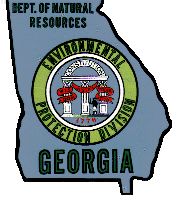Georgia DNR: Take Extra Caution on Roadways to Avoid Deer
OutdoorHub 10.19.11

Social Circle, Ga. October 19, 2011 – With an estimated 50,000 deer-car collisions annually in Georgia, the Georgia Department of Natural Resources, Wildlife Resources Division advises motorists across the state to be extra cautious of increased deer and wildlife sightings this fall season.
“Some Georgia motorists may only expect deer to cross rural roadways, while in fact, urban and suburban roads are also prime areas for deer-car collisions,” explains Don McGowan, Wildlife Resources Division biologist. “Hunting is oftentimes mistakenly blamed for increased deer-car collisions in autumn when, in reality, deer are on the move due to a series of both natural and human causes.”
Increased deer sightings may occur for a number of reasons, such as the following:
- Mating Season- Deer mating season occurs between October and early December. Male deer go into rut and begin actively searching for mates. This greatly contributes to the increased movement of deer, bringing them across roadways.
- Increased human population and rural development- As the human population continues to grow and expand into traditionally rural areas, deer lose their natural food source and consequently move into new areas in search of food and water.
- Time Changes- As we begin to “fall back” for daylight savings time, our days become shorter and nights become longer. Rush hour for most commuters tends to fall during the same hours in which white-tailed deer are most active – at dawn and dusk.
- The Division offers motorists some tips and information to help avoid potential collisions:
- Unpredictable: Always remember deer are wildlife and therefore, can be unpredictable. A deer calmly standing on the side of a road may bolt into or across the road rather than away from it when startled by a vehicle.
- One Deer Usually Means More: Take caution and slow down when a deer crosses. Deer generally travel in groups, so if one crosses, be prepared that others may follow.
- Time of Day: As deer are most active at dawn and dusk, they typically are seen roadside during the early morning and late evening – the same times most people are commuting to and from work.
- Time of Year: While deer-car collisions can occur any time of year, the fall breeding season is a peak time for such accidents. Road shoulders generally provide green food both during extremely dry times of the year and following a long, hard winter.
- Minimize Damage: If it is too late to avoid a collision, drivers are advised to slow down as much as possible to minimize damage – resist the urge to swerve to avoid the deer, this may cause further damage, sending drivers off the road or causing a collision with another vehicle. If an accident occurs, alert the police as soon as possible.
For more information on deer-car collisions in Georgia or to learn more about white-tailed deer or deer seasons, visit www.georgiawildlife.com , contact a Wildlife Resources Division Game Management office or call 770-918-6416.

